Paper Mario: The Thousand-Year Door starts off in standard Mario style, with Princess Peach once again getting herself into trouble. After visiting the seedy town of Rogueport, she finds a mysterious treasure map. She sends the map to Mario and is promptly kidnapped by an evil gang. The map leads to the Thousand-Year Door, which can only be opened by collecting Crystal Stars from across the land. To rescue Peach and discover the true secret of the Thousand-Year Door, Mario has to set out on a brand-new adventure. It's a Mario game, so you have a rough idea of what to expect.
The Thousand-Year Door is charming. It's silly, lighthearted and frequently goofy enough that it's difficult to not crack a smile at the various characters' antics. The villains are ridiculous, and the heroes are only slightly less so; the encounters are frequently a delight. It doesn't matter if it's solving a mystery or fighting in a tournament — there's something for everyone. Heck, even Luigi has his own (off-screen) adventure that you can check on from time to time.
The Thousand-Year Door has one of the most effective visual updates I've ever seen. The simple paper-like graphics meant that the original game aged fairly well. The Switch remake does a lot of heavy lifting in improving the graphics in subtle ways, to the point that I was a bit shocked when I went back to compare it to the original. Environments have more detail and more colors, characters have more animations, cut scenes are structured slightly differently, and all in all, it has received a tremendous facelift while somehow looking exactly like I remember it looking in the olden days. The remastered music is also excellent, but if you prefer the original soundtrack, you can just swap to it.
If you've never played the Paper Mario franchise before, they exist somewhere between adventure games and RPGs. The Thousand-Year Door has a turn-based RPG combat system, but a good chunk of your time is spent exploring places and trying to find items, clues and shortcuts to the next locale. You're aided by a series of partners who each have special skills that can contribute to puzzle-solving. For example, Koops the Koopa can be used to hit objects in the distance by kicking him at them, and he can even spin in place so you can set him up to remotely hit switches. There's a good amount of time in the game spent on creative little puzzles, but of course, you'll be fighting a lot, too.
The combat system in Thousand-Year Door is extremely cool. Like the other Mario RPGs, it uses a turn-based combat system with timed hits that reward you with additional damage or defense for timing the button presses well. Like the original Mario 64, you have a two-person party: Mario and a "partner" character who can be swapped. Each partner has their own HP pool, but "Flower Points" (FP) are shared between the party members. FP is used to cast special spells but can be replenished.
Character customization is done primarily through badges, which are equippable items that grant passive and active abilities to Mario and his pals. There are dozens badges, and each one has a distinct ability, including doing more damage, providing a bonus when at low HP, and changing the sound effects of the character's attacks. This allows for a shocking amount of character customization, and it's possible to build Mario as anything from a nearly unkillable tank to an absurdly powerful offensive attacker who needs to be at 1 HP to properly function.
What really sets apart Thousand-Year Door is how the fights take place on a stage. From the very first combat scene, it introduces the premise that your fights are taking place on a theater stage for a crowd. Being on a stage means that you'll be dealing with the set in a variety of ways. For example, if you smash the ground with a hammer, it may destabilize the backdrop, causing it to fall down on friends (or foes) for extra damage.
The crowds vary depending on how well you're doing in combat and your current location. It might be a crowd of Toads in a friendly area or a swarm of Goombas in a dungeon. The crowd isn't passive, though. They're invested in the fight in many ways. Enemies may throw garbage from the stage, or allies may toss items. Sometimes, crowd members will run on stage and try to interfere with the "play" by doing things like dropping stage lights onto one of the sides.
However, the crowd also want to be entertained. As you fight, performing timed commands accurately will make the crowd cheer, while doing badly might make some of them leave. There are even secret "stylish" button presses you can use during an attack that require precise timing but add a crowd-pleasing flourish. Depending on the size of the crowd, you'll earn Star Points, which can be spent on powerful super moves that are unlocked as you progress the story. Fight stylishly, and you'll be able to use these moves far more often.
The result is a combat system that is creative, clever, constantly entertaining, and frequently comes up with ways to make things more fun. The first boss hates frogs. If you find a badge that changes the sound effects of your attacks to those of a frog, the boss responds poorly and becomes easier. The game is fantastic about making each new experience a fun encounter to the point that I'm loathe to spoil any of the surprises.
If there's one complaint — and it's a minor one — it is that the game is fairly easy, as you might expect from a game for all audiences. If you're willing to experiment with badges and partner choices, you can very quickly create strategies that obliterate all but the toughest bosses in a single attack. That can drain some of the fun from the game's otherwise creative and quirky battles, though. For adult players, I recommend avoiding min-maxing the game unless you feel really stuck; for younger players, the difficulty level should be just right.
The Thousand-Year Door wasn't a game free of criticisms. In the original game, the biggest problem was that it wasted quite a bit of your time in tediously backtracking through the same areas to progress the plot. While the Switch remake doesn't entirely fix this, it goes out of its way to try to alleviate that aspect. Fast-travel options unlock earlier in the game, certain segments are adjusted or cut, and things are generally far less tedious. If you're coming to the game fresh, there may still be points that get a bit annoying, but to returning fans, it's a very welcome improvement.
The game has a number of other small quality of life options. Animations can be skipped, and your chosen partner can be swapped out instantly using a new Ring Menu instead of having to manually go through the menus to swap them every time you need to adjust for a puzzle — or, more likely, every time you need to bring out Goombella for some of her funny text. There are a lot of small adjustments, including a couple of new bosses to fight, but mostly, it's the same game, but it's smoother and easier to play.
Paper Mario: The Thousand-Year Door is everything it needs to be. The original game was such a delightful entry that it has overshadowed every Paper Mario game since, and the remake captures all of that charm without losing an iota of what made the original great. It's easily the definitive version of the game, and it's a fantastic experience for newcomers and nostalgic fans alike. It's a strong contender for the best Mario RPG of all time, and if you're looking for a fun adventure, it's one of the best experiences on the Switch.
Score: 9.0/10
More articles about Paper Mario: The Thousand-Year Door




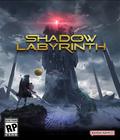


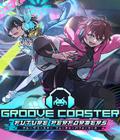
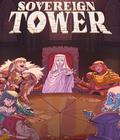
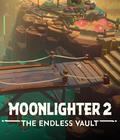
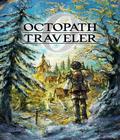
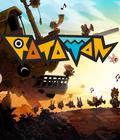

 Paper Mario: The Thousand-Year Door from the Nintendo GameCube system will return with enhanced graphics for Nintendo Switch.
Paper Mario: The Thousand-Year Door from the Nintendo GameCube system will return with enhanced graphics for Nintendo Switch.

























